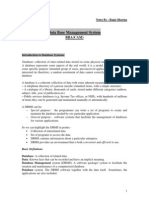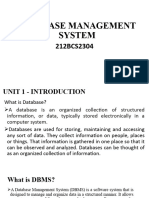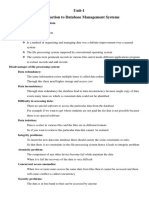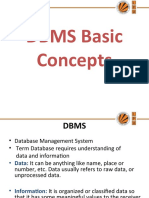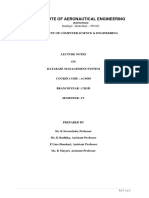0% found this document useful (0 votes)
45 views9 pagesChapter 1
The document discusses the basics of database management systems including what data and databases are, different types of databases, database management systems, advantages and disadvantages of DBMS, components of DBMS, file environments, database schemas and instances, and data abstraction in DBMS.
Uploaded by
sandipkhadka1290Copyright
© © All Rights Reserved
We take content rights seriously. If you suspect this is your content, claim it here.
Available Formats
Download as PDF, TXT or read online on Scribd
0% found this document useful (0 votes)
45 views9 pagesChapter 1
The document discusses the basics of database management systems including what data and databases are, different types of databases, database management systems, advantages and disadvantages of DBMS, components of DBMS, file environments, database schemas and instances, and data abstraction in DBMS.
Uploaded by
sandipkhadka1290Copyright
© © All Rights Reserved
We take content rights seriously. If you suspect this is your content, claim it here.
Available Formats
Download as PDF, TXT or read online on Scribd
/ 9












